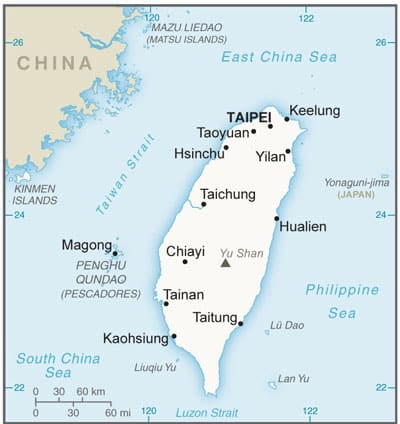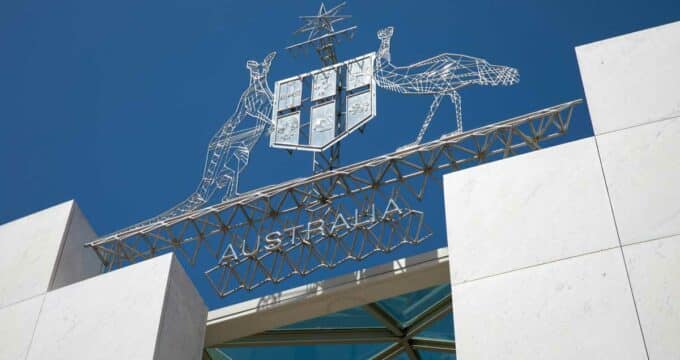Recruiting in Taiwan: An established student market adapting to demographic change
- More than 55,000 students from Taiwan studied abroad in 2024
- Taiwan remains a top sending market for leading destinations such as the United States, Australia, and Japan, and is sending larger numbers of students to a wider field of destinations in Europe and Asia
Fast Facts
Population: 23.4 million
Youth population: 9.8% aged 15–24, but the population is ageing
Youth unemployment rate: 11.71% (June 2025 estimate)
Currency: New Taiwan Dollar (NT$)
GDP: Nominal GDP = USD$788 billion in 2025; PPP GDP = USD$1.7 trillion
Main economic sectors: Semiconductors, technology and electronics, services, and manufacturing
Official language: Mandarin
Language of instruction: Mandarin, but Taiwan's "Bilingual 2030" policy seeks to expand English-medium instruction at the primary and secondary levels
Tertiary enrolment: 1.09 million (as of 2023) but many universities in Taiwan are reporting declining enrolments due to the ageing population
Literacy rate: 98.5%
English-language proficiency: Low to moderate, with proficiency generally higher in Taipei
Religion: Buddhism, Taoism
Main student cities: Taipei, Taichung, Kaohsiung
Economy: Taiwan is in many respects a high-tech manufacturing economy. GDP growth is projected at 3.1% for 2025, reflecting a dampening outlook related to US tariff policies and other trade disruptions. Still, the projected growth for 2025 will outpace most other Asian economies, with the exceptions of China and India.

Taiwan is a well-established student sending market and has long played an important part in shaping global patterns of student mobility, especially with respect to major study destinations such as the United States, Australia, and Canada.
It is, however, a market in flux. The college-aged population is declining, to the point that a number of universities in Taiwan are reporting falling enrolments. In response, the government has moved to establish a national strategy to expand the country's foreign enrolment to 320,000 students by 2030 (up from just over 123,000 students in 2024).
Taiwan is now taking steps to align its immigration policies and other supports with that long-term growth goal, and has a supporting target to see roughly two-thirds of foreign graduates staying on in the country to work after their studies.
The driving force behind those goals is the country’s rapidly ageing population. Taiwan has one of the lowest fertility rates in the world, and demographers expect that, as of this year, Taiwan will be a "super-aged" society, with those aged 65 and older composing more than 20% of the population. This is, of course, high on the government’s radar already and it is going to be a major societal and economic challenge going forward, including for maintaining the enrolment base and current capacity of Taiwan's higher education system.
Taiwan has some strengths to bring to bear, however, not the least of which is a resilient and growing economy. The island is home to a high-tech manufacturing economy, a noted centre for semi-conductor production among other text exports, and its GDP growth tends to outpace all regional neighbours, with the exception of China and India. The underlying strength of Taiwan's economy is reflected across a range of economic indicators, including its recent elevation to 6th place – among 69 nations in the annual survey – in the 2025 IMD World Competitiveness Rankings.
A stable and growing outbound market
Taiwan has consistently been an important market in terms of outbound mobility, with students historically focused on major English-speaking destinations such as the United States, Australia, and Canada. As with many other sending markets, that focus is shifting a bit in recent years, with students showing more interest in the United Kingdom, Ireland, and other destinations in Europe and Asia.
In particular, the Philippines has emerged as an important destination for English language studies. Danny Chang is the president of the International Education Consultants Association (IECA), the peak body for Taiwanese agents, and also the general manager of the education agency Global Education Services. He explains: "The biggest language travel market is the Philippines. The number we expected is about 15,000 students in 2024 – ten years ago, we were never expected that this market will become the number one [choice] for language travel." More broadly, the Philippines has emerged, both before and after the pandemic, as a key regional destination for English language study, offering not only proximity but lower study and travel costs for students coming from elsewhere in Asia.
Mr Chang notes as well the growing popularity of Canada for secondary school studies, while the US remains the top choice of students from Taiwan for undergraduate and post-graduate programmes. He also highlights Japan as a destination of growing importance, and especially for shorter-duration studies.
There is limited data on overall outbound volumes in the years after the pandemic, but Taiwan's Ministry of Education reports that a total of 53,051 Taiwan students traveled abroad to study or work in 2022.
The Institute of International Education's (IIE) Open Doors data indicates that there were 23,157 Taiwanese students in the United States in the 2023/24 academic year, a 6.1% increase over the previous year. Nearly a quarter of that total (24.1%) were enrolled in undergraduate programmes. Another 43.1% were in graduate studies, with 28.3% engaged in Optional Practical Training (OPT) placements.
That level of enrolment makes Taiwan the fifth-largest sending market for the US, after only India, China, South Korea, and Canada. It also means that the United States remains far and away the leading destination for students coming out of Taiwan.
Australia is the #2 destination for Taiwanese students. There were 11,480 students from Taiwan studying in Australia in 2024 – representing a nearly 18% increase from the year before and making Taiwan the 18th-largest sending market for Australian institutions and schools.
Meanwhile, Taiwan is also the seventh-largest sending market within Japan's surging foreign student numbers, with year-over-year growth of 9.3% in 2024 and a total enrolment of 7,998.
Other destinations of note include:
- Canada, which hosted 5,080 students from Taiwan in 2024, up 4% over 2023.
- The United Kingdom, which enrolled 4,380 students from Taiwan in 2024, another 4% increase over the year before.
- There were 2,868 Taiwanese students in Germany in 2024, representing roughly a 3% increase on 2023 levels.
Add to those the roughly 15,000 language students in the Philippines and that would suggest the total outbound from Taiwan was 55,000 students (or more) in 2024. The steady growth from this traditional sending market is a factor the increasing recruitment efforts of a number of destinations, as outlined above, but it also reflects a persistent concern on the part of parents for the prospects of their children in Taiwan in terms of both the quality of higher education available and the career opportunities, the latter being especially relevant against a trend of high (and rising) youth unemployment.

Becoming a bilingual society
The US International Trade Administration (ITA) reports that, "In late 2018, Taiwan launched an initiative to become a bilingual English-Mandarin society by 2030, with a particular focus on K-12 students and civil service personnel. While English is the main foreign language taught in Taiwan schools, Taiwan’s Ministry of Education has identified oral proficiency as an area for improvement, relative to reading and writing.
Local regulations limit the number of foreign teachers in Taiwan’s public school system. Consequently, Taiwan sees online and education technology as a way to connect students with skilled bilingual educators. Simultaneously, Taiwan is increasing its budget to the public sector, schools, and libraries to improve the public’s English proficiency. To achieve its Bilingual 2030 plan, Taiwan allocated a total of US$361 million for the period 2021 to 2024. The leading focus areas by budget allocation are the K-12 sector (US$234.26 million) and the higher education sector (US$90.1 million).
Market entry
The ITA adds, "Partnering with local schools is an effective strategy for schools interested in recruiting Taiwan students to joint-degree or short-term summer programmes…Partnering with local student recruiting agents also provides year-round exposure in the Taiwan market. Recruiting agents are a primary resource used by Taiwan students and parents when planning study abroad activities."
And finally: "Participation in education fairs is another effective method for recruiting Taiwan students. Fair organizers have a deep knowledge of the market and can greatly reduce marketing expenses. Local fair organisers also counsel students throughout the year and can follow up with prospective students."
Notable education fairs in Taiwan include: the OH! Study Overseas Education Expo, the IECA Education Exhibition, and IDP Taiwan's Study World Expos.
For additional background, please see:
- Attend ICEF Taiwan to connect with quality student recruitment agencies from Taiwan, and for the latest market intelligence on this key sending market.
















